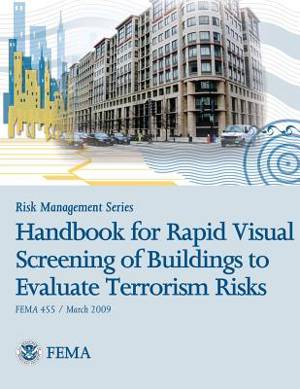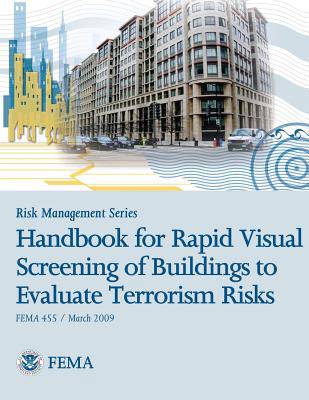
Door een staking bij bpost kan je online bestelling op dit moment iets langer onderweg zijn dan voorzien. Dringend iets nodig? Onze winkels ontvangen jou met open armen!
- Afhalen na 1 uur in een winkel met voorraad
- Gratis thuislevering in België vanaf € 30
- Ruim aanbod met 7 miljoen producten
Door een staking bij bpost kan je online bestelling op dit moment iets langer onderweg zijn dan voorzien. Dringend iets nodig? Onze winkels ontvangen jou met open armen!
- Afhalen na 1 uur in een winkel met voorraad
- Gratis thuislevering in België vanaf € 30
- Ruim aanbod met 7 miljoen producten
Zoeken
Risk Management Series
Handbook for Rapid Visual Screening of Buildings to Evaluate Terrorism Risks (Fema 455 / March 2009)
U S Department of Homeland Security, Federal Emergency Management Agency
Paperback | Engels
€ 45,45
+ 90 punten
Uitvoering
Omschrijving
This rapid visual screening procedure has been developed for use in assessing risk of terrorist attack on standard commercial buildings in urban or semi-urban areas, but it is also intended to be applicable nationwide for all conventional building types. It can be used to identify the level of risk for a single building, or the relative risk among buildings in a portfolio, community, or region as a prioritization tool for further risk management activities. The information gathered as part of this screening procedure can also be used to support and facilitate higher level assessments by expert investigators performing building-specific evaluations of threat, consequences, and vulnerability. Implementation of FEMA 452, Risk Assessment, A How-to Guide to Mitigate Potential Terrorist Attacks Against Buildings, has demonstrated the need for a preliminary procedure to assess the risk of terrorist attack that is quick and simple to use. It has also shown that such a procedure needs to be usable by screeners who are knowledgeable about building systems, but not necessarily experts in anti-terrorism or structural design. This will reserve the use of experts for higher risk buildings requiring more detailed assessment when resources are limited. In this document, the concepts for rapid visual screening are combined with a risk-based procedure for manmade threats defined in FEMA 426, Reference Manual to Mitigate Potential Terrorist Attacks Against Buildings, and FEMA 452, Risk Assessment, A How-to Guide to Mitigate Potential Terrorist Attacks Against Buildings, from the FEMA Risk Management Series of publications. This handbook outlines a rapid visual screening procedure that quantifies the risk to a building due to a terrorist attack that is capable of causing catastrophic losses in terms of fatalities, injuries, damage, or business interruption. The primary purpose of this screening procedure is to prioritize the relative risk among a group of buildings in a portfolio or community but it can also be used to develop building-specific risk information. It is intended to be the first step in a tiered assessment process that includes successively more refined analyses when more detailed information is needed. Three generic types of terrorist threat are considered in this procedure. These include intrusion into the building, a vehicle borne improvised explosive device (VBIED), and a chemical, biological or radiological (CBR) release. Quantification of relative risk is based on the methodology outlined in FEMA 426, in which risk is characterized as the product of three factors: consequences, threat, and vulnerability. In this rapid visual screening procedure, these three factors are evaluated using a Data Collection Form based on checklists and worksheets contained in FEMA 426 and FEMA 452. To make the screening procedure rapid, the assessment is limited to the most dominant features governing the overall risk to a building given a terrorist attack. In this procedure there is an emphasis on the vulnerability factor, due in part to the relatively significant level of control that the owner has with respect to this factor for a given building compared with the other two factors: threat and consequences.
Specificaties
Betrokkenen
- Auteur(s):
- Uitgeverij:
Inhoud
- Aantal bladzijden:
- 172
- Taal:
- Engels
Eigenschappen
- Productcode (EAN):
- 9781482094442
- Verschijningsdatum:
- 27/01/2013
- Uitvoering:
- Paperback
- Formaat:
- Trade paperback (VS)
- Afmetingen:
- 216 mm x 279 mm
- Gewicht:
- 412 g

Alleen bij Standaard Boekhandel
+ 90 punten op je klantenkaart van Standaard Boekhandel
Beoordelingen
We publiceren alleen reviews die voldoen aan de voorwaarden voor reviews. Bekijk onze voorwaarden voor reviews.











